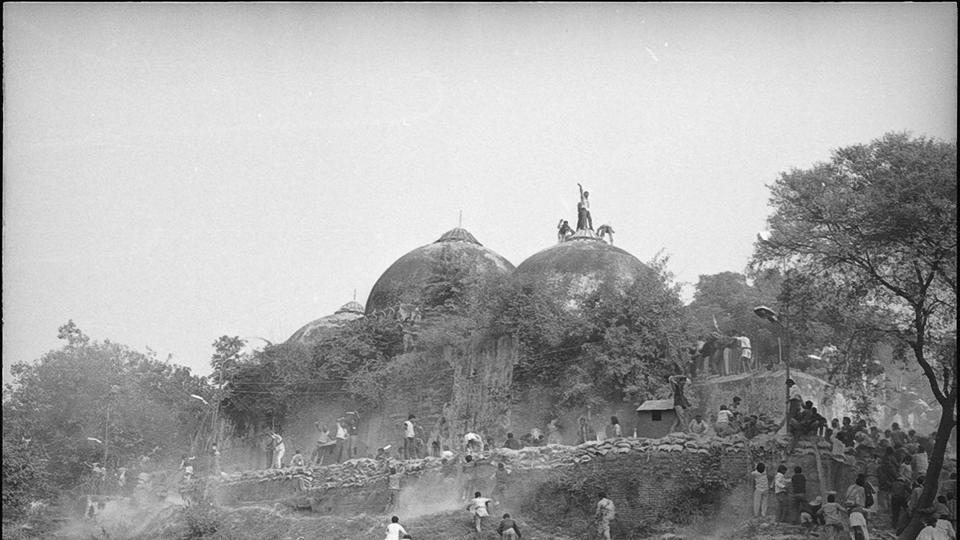CJI Ranjan Gogoi-led five judge bench to hear Ayodhya case from January 10
New Delhi, January 8: Chief Justice of India Ranjan Gogoi on Tuesday constituted a five-judge Constitution Bench to hear from January 10 the politically sensitive Ram Janmbhoomi-Babri Masjid dispute, which has been hanging fire for months despite completion of procedural formalities, including translation of documents and filing of affidavits, counter-affidavits and rejoinders.
Besides CJI Gogoi, the Bench includes Justice SA Bobde, Justice NV Ramana, Justice Uday Umesh Lalit and Justice DY Chandrachud—who are in line of succession to become CJIs.
During a brief hearing lasting barely 30 seconds, a Bench CJI Gogoi and Justice Sanjay Kishan Kaul had on Friday said further order on hearing 14 cross-appeals against the September 30, 2010, verdict of the Allahabad High Court’s order dividing the disputed land equally between Ram Lalla, Nirmohi Akhada and Sunni Wakf Board will be passed by an “appropriate bench” on January 10.
On Tuesday, a notice on the top court’s website said the Constitution Bench will take up the matter on Thursday at 10.30 am.
Earlier, a Bench of Chief Justice Dipak Misra (since retired), Justice Ashok Bhushan and Justice S Abdul Nazeer was hearing the matter but after Justice Misra’s retirement on October 2, the Bench had not been reconstituted.
When the matter was taken up on January 4, there was no indication that the land dispute case would be referred to a constitution bench as the apex court had simply said that further orders in the matter would be passed on January 10 by “the appropriate bench, as may be constituted”.
The newly set up five-judge bench comprises not only the incumbent CJI but the four judges who are in line to be CJI in the future. Justice Gogoi’s successor would be Justice Bobde followed by Justices Ramana, Lalit and Chandrachud.
Amid demands by Hindu organiaations for an ordinance to pave the way for construction of Ram Temple at Ayodhya, Prime Minister Narendra Modi had last week suggested that any such decision could happen only after the completion of the judicial process.
The top court had on September 27 by a 2:1 verdict refused to refer to a larger bench its 1994 verdict which ruled a “mosque is not an essential part of the practice of Islam”. It had directed the cross appeals in the Ayodhya title suit to be listed before a three-judge Bench on October 29.
If the Constitution Bench takes up Ayodhya matter from January 10 onwards, the hearing would most probably coincide with the 2019 Lok Sabha election campaign. But it remains unclear if the Ayodhya land dispute verdict will be delivered before the 2019 Lok Sabha polls.
Hindus believe that Lord Ram was born in Ayodhya thousands of years ago. During Mughal emperor Babar’s rule, a mosque was constructed at the place in 1528 after destroying the temples existing there.
More than 70 years after the Faizabad Civil Court rejected its claim over Babri Masjid as a Shia Wakf, the Shia Central Waqf Board of UP had last year moved the Supreme Court to assert its claim over the disputed site. Interestingly, the Special Leave Petition—which challenged a 1946 decision of the Faizabad Civil Court—said the Babri Masjid was built by demolishing a Ram Mandir in Ayodhya.
The RSS, Vishwa Hindu Parishad and BJP have been running a campaign for construction of a Ram temple in Ayodhya. On December 6, 1992, kar sevaks of right-wing Hindu organisations demolished the disputed structure. Many BJP leaders, including LK Advani and Murali Manohar Joshi, are facing a criminal case in connection with the demolition.
But the civil dispute over 2.7 acres is a separate one that has been on since 1961 when the Sunni Wakf Board took the matter to court.



